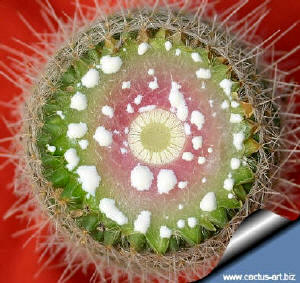|

White latex in the
cortex and
tubercles
of
Mammillaria geminispina (cross-section) |
It is a complex emulsion in which
proteins, alkaloids,
starches,
sugars,
oils, tannins,
resins and
gums are found. Usually plants latex
is white, but some have yellow, orange, scarlet or
colorless. The cells or
vessels in which latex is
found make up the laticiferous system.
This specialized vessels are called latex vessels. In the
Asclepiadaceae and
Euphorbiaceae families the
laticiferous system grow into a branching system extending throughout
the plant including roots,
stems,
leaves, and sometimes the
fruits.
In some plants the latex is a form of stored
food while in other is an
excretory product in which waste products are deposited. But the
primarily function of latices is to protect the plant in case of
injuries, drying to form a protective film that prevents the entry of
fungi and
bacteria. Also, it may be a
defence against herbivorous
animals, in view of the fact that in some plants latex is very bitter or
even poisonous. It may be that latex carry out all of these functions to
varying degrees in different plant
species.
The latex of the rubber tree is used to make the rubber. |